Desktop Tips
Tip #587
November 1, 2024
Ctrl/⌘ + double-click on a tab to select all tabs from the same domain.
You can hold down the Ctrl/⌘ button and select tabs individually, or use Shift + click to select several tabs in a row. But there’s something very satisfying about having tabs scattered all over the Tab Bar and watch all the ones from the same domain get selected and highlighted with one simple move.
You can even use these shortcuts together to get a mixed selection of tabs faster.
Tip #585
October 30, 2024
Skip scrolling and jump to the latest emails with a click of a button.
Vivaldi Mail‘s “Jump to Latest” button makes it easy to hop back to the most recent email with a single click.
The button is only visible when the newest emails are out of view. Whether the button is at the top or bottom of the list depends on whether you sort your mail in ascending or descending order.
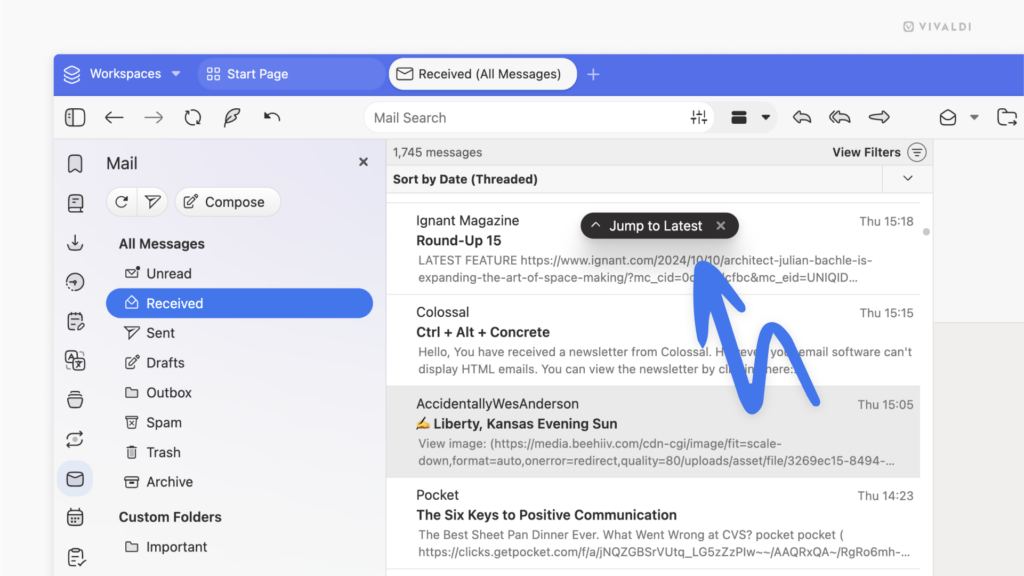
Tip #584
October 29, 2024
Fill your Dashboard with useful widgets.
Latest emails, tasks, newest feed articles, most visited sites, favorite bookmarks, and more can be pulled into the all-in-one control center – the Dashboard.
To add a new widget:
- Go to the Dashboard.
- Click on “+ Add a Widget” at the bottom of the window.
- Click on the widget you want to add.
Some widgets, like Date and Tip of the Day, can be added to the Dashboard once, but most can be added multiple times. This allows you to display different content in each widget, such as different email accounts, calendars, bookmark folders, etc.
Tip #582
October 25, 2024
Divide your feeds into folders in the Vivaldi Feed Reader to group them by topic.
Staying on top of your favorite content in the Vivaldi Feed Reader is easier when you have the feeds you follow neatly organized into folders.
To add a new Feeds folder:
- Open the Feeds Panel.
- Near the top, click on the
 New Folder button. Alternatively, right-click on an existing feed or feed folder and select “New Folder” from the context menu.
New Folder button. Alternatively, right-click on an existing feed or feed folder and select “New Folder” from the context menu. - Give the new folder a name.
- Click “Add Folder”.
- Drag-and-drop feeds into the folder.
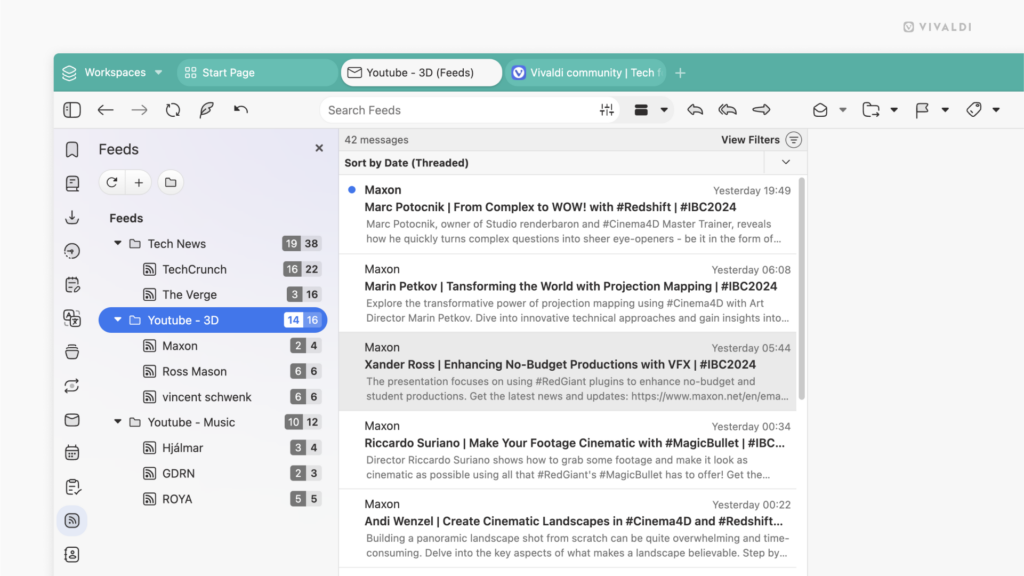
Tip #581
October 24, 2024
Make your choice between spacious and compact user interface layouts.
Do you prefer to give the buttons on the toolbars plenty of breathing room, or do you want them packed together nice and snug next to each other? As with most things in Vivaldi, you’re in control and can decide what works best for you.
To change the UI density:
- Go to Settings > Appearance > Window Appearance > User Interface Density.
- Choose between:
- Regular i.e. the more spacious layout, and
- Compact layout.
Tip #580
October 22, 2024
Fade the user interface colors of the browser windows you have open in the background.
When you’re viewing multiple browser or app windows side by side, it can be difficult to see, which one you’ve focused on. Fading Vivaldi window’s colors when it’s not in focus helps to make it more obvious.
To enable background window color fading:
- Go to Settings > Appearance > Window Appearance.
- Enable “Fade Colors in Background Windows”.
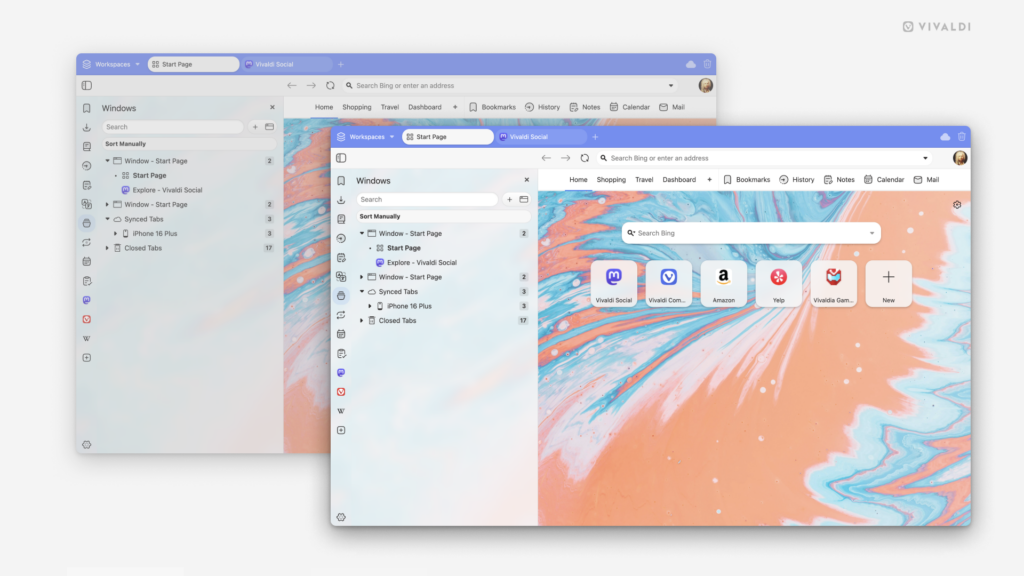
Tip #578
October 18, 2024
Click and drag to easily resize or minimize Vivaldi Mail’s Quick Reply.
Is your quick reply email getting longer than expected or do you temporarily want to hide it altogether?
To resize the Quick Reply field:
- Place the mouse cursor on the top edge of the Quick Reply section.
- Click and drag upwards to expand the area and downwards to make it smaller. Drag all the way down towards the bottom edge of the window to minimize it altogether.
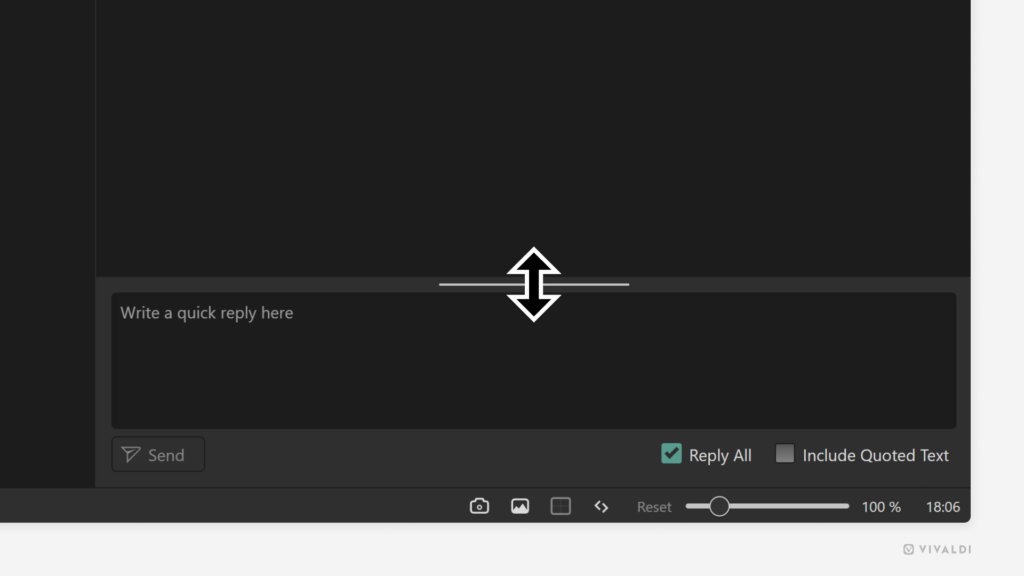
Tip #577
October 17, 2024
Give your Speed Dial folders a personalized look by adding custom thumbnails.
In addition to individual Speed Dial bookmarks, you can add thumbnails to Speed Dial folders (see Tip #69).
To add a custom thumbnail image to a bookmark folder:
Option 1
- Open the Start Page.
- Right-click on a folder and select “Select Custom Thumbnail”.
- Locate the image file you want to use.
- Click “Open”.
Option 2
- Open the Bookmarks Panel or Bookmarks Manager.
- Select the bookmarks folder.
- In the information section (name, nickname, description), hover over the folder icon.
- Click on
 “Select Custom Thumbnail”.
“Select Custom Thumbnail”. - Locate the image file you want to use.
- Click “Open”.
The recommended image size is 440×360px and most image formats, including animated GIFs, are supported.
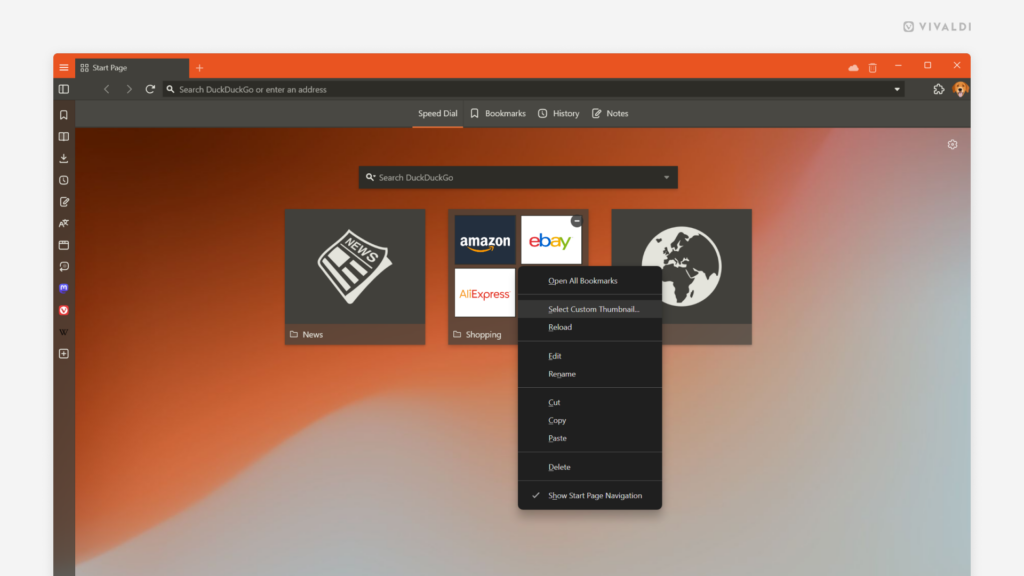
Tip #574
October 14, 2024
Select the default search engine for image search.
Reverse image search is a great way to find similar images to the one you’re currently viewing. Just right-click on the picture and select “Search for image” (sometimes the option can be in the “Image” subfolder).
The results will be provided by your default image search engine, so pick the one you want to see results from.
To review your settings:
- Go to Settings > Search > Image Search Engine.
- Select, whether you want to get results from Bing, Google, or a search engine you’ve added yourself.
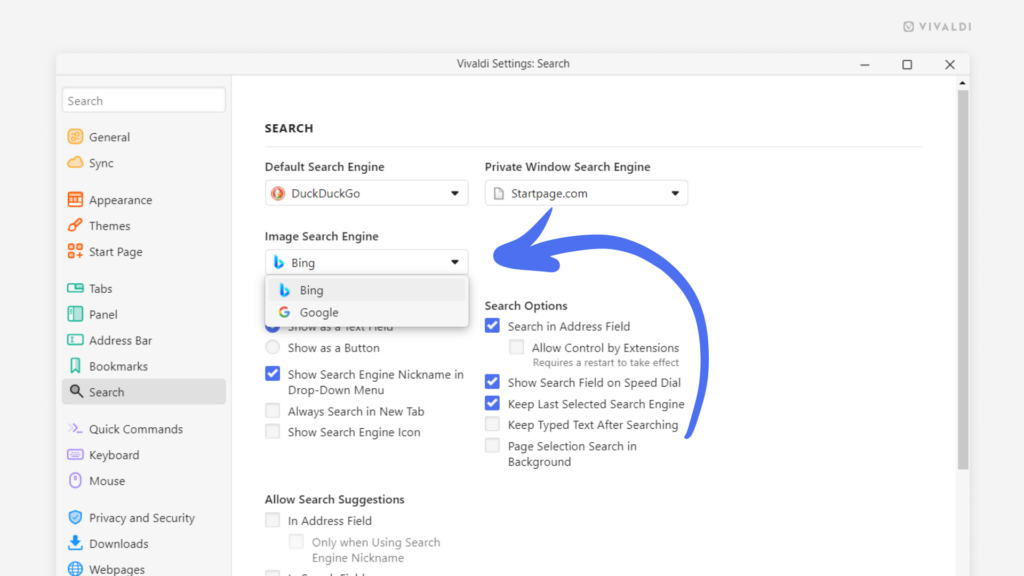
Tip #573
October 10, 2024
To sync or not to sync? You decide what browsing data is synchronized across all your devices.
Bookmarks, Tabs, Passwords, Notes, History, etc. – you can easily access all of it and more in Vivaldi on all your devices when you use the Sync feature. But, whether you sync all data or just some of it, is up to you.
To sync selected data:
Tip #571
October 8, 2024
Turn off Address Field Drop-Down Menu for more private browsing.
Do you often show things on the web to someone sitting next to you and discover yourself thinking that you’d prefer if they couldn’t see your previous searches, history, and more? A great solution for that is to disable the Address Field Drop-Down menu. That way, matching suggestions won’t be displayed as you type a search term or a link in the Address Field.
To disable the Address Field Drop-Down Menu:
- Go to Settings > Address Bar > Drop-Down Menu.
- Disable “Show Drop-Down when Typing”.
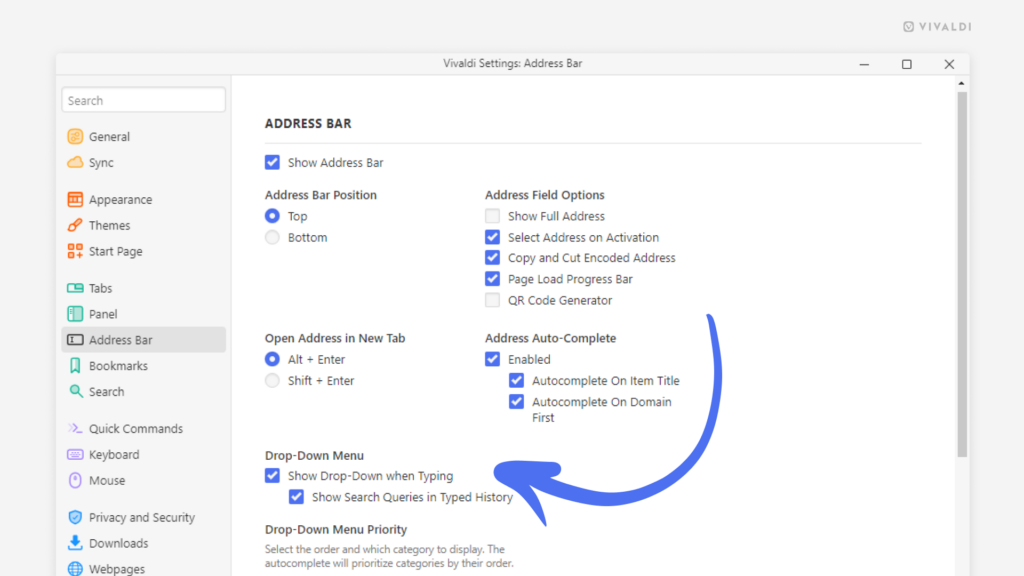
Tip #568
October 3, 2024
Start adding a new event in the Vivaldi Calendar by clicking and dragging to set the event’s length.
You can set a time for the event by typing or using the date and time picker in the event editor. But a much cooler option is to click and drag to fill the timeslot in the calendar that the event is going to take up. When you release the mouse button, the event editor will open, allowing you to fill out the rest of the event’s details.
Give it a go!